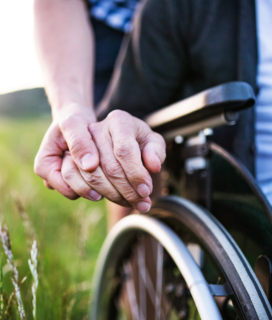400 Promenade Wy Ste 1500, Sugar Land, TX 77478, United States

What is Hand, Foot, and Mouth Disease?

A very common viral infection that is highly contagious! Numerous viruses have been found to contribute to HFM (Hand, Foot, and Mouth Disease), with the Coxsackie virus being the most common source of it in the United States. Anyone can get affected by Hand, Foot, and Mouth Disease, but it’s common in children under 5 years of age. Mostly, it’s a mild ailment that will go away on its own, but in some kids, it may cause serious complications. So, parents, be aware! Southwest Urgent Care is just a call away if you require any assistance or information regarding HFM disease.
Urgent Care for Hand, Foot, and Mouth Disease
As Hand, Foot, and Mouth disease is caused by a viral infection, it can’t be treated with an antibiotic. It is a very uncomfortable and highly contagious disease, with no specific treatment available. Even though HFM disease is a minor illness that gets better on its own within a few days, it is important to visit a provider if symptoms seem to be worsening. Southwest Urgent Care offers walk-in care, virtual visits, extended hours, on-site labs, and the fast treatment of urgent, non-life-threatening illnesses.

Characteristics and Symptoms of Hand, Foot, and Mouth Disease
HFM typically starts with a fever, reduced appetite, and decreased energy. A day or two after the fever starts, the typical HFM rash appears, causing small bumps or blisters. The incubation period for HFM illness symptoms is 3–6 days. Some common symptoms are:
- Fever
- Decreased appetite
- Decreased energy
- Sore throat
- Malaise
- Rash on the soles, palms, and buttocks
- Red, painful, blister-like lesions in front of the tonsils, gums, tongue, and inside of the cheeks
Some children might have the following symptoms too:
- Become irritable and fussy.
- Sleep more than usual.
- Drooling due to painful swallowing
- Stomach pain, vomiting, or diarrhea.
Southwest Urgent Care is open 365 days a year, in all seasons, to provide you relief from HFM infection symptoms.
Transmission of Hand, Foot, and Mouth Disease
HFM occurs in the U.S. mostly in the summer and fall; nonetheless, you can get it any time of year! A person infected with a virus is contagious, which means that they can pass the virus to other people via:
- Person-to-person contact
- Nose and throat secretions; saliva, drool, nasal mucus
- Fluid from blisters or scabs
- Feces (poop)
How does HFM spread virally? Hand, foot, and mouth disease spreads easily through:
- Respiratory droplets contain virus particles from an infected person’s cough or sneeze.
- Touching a sick person or creating close contact, like kissing, hugging, or sharing cups or eating utensils.
- Touching an infected person’s feces, such as when changing diapers, then touching your eyes, nose, or mouth.
- Contact with contaminated surfaces and objects like doorknobs or toys
Diagnosis of Hand, Foot, and Mouth Disease
HFMD is identified via a physical examination. Your provider will look for blisters and rashes around your mouth and body and ask about additional symptoms. The doctor may collect stool samples or swabs from the throat to be able to confirm the diagnosis and make sure the oral lesions are not a result of some other type of infection. The on-site lab facility at Southwest Urgent Care can help achieve the goal of an accurate and quick diagnosis.
Prevention and Treatment
Prevention is better than cure! Usually, in 7 to 10 days, an HFM-infected person gets better on their own. However, some complications are more likely to occur in young children. Children get dehydrated as eating and drinking are painful due to mouth and throat sores. Also, fever can evaporate water from the skin’s surface quickly. Some steps to relieve symptoms and prevent catching or spreading HFM disease are:
- Over-the-counter medications: acetaminophen or ibuprofen (not aspirin).
- Prescription or over-the-counter topical ointments to soothe blisters and rashes
- Syrups or lozenges to ease painful sore throats
- Drink enough liquids.
- Wash your hands often with soap and water.
- Never touch your eyes, nose, or mouth with unwashed hands.
- Avoid close contact with sick people.
- Clean and disinfect frequently touched surfaces and shared items.
It’s crucial to seek medical assistance if you or your child show increasing HFM symptoms. Get connected to our provider via a virtual visit or walk-in for a timely diagnosis and care program for Hand, Foot, and Mouth disease.
- SHARES
Post
Tweet
Send
Our Latest Posts

20 Most Asked Questions About Weight Loss Injections: Ozempic®, Wegovy®, Mounjaro®, Zepbound™ and More
Read More

Swimming Safety for Kids: Pool Season Safety Tips and Health Risks Every Parent Should Know
Read More
Popular Services
Opening Hours
- Monday: 9:00 am to 7:00 pm
- Tuesday: 9:00 am to 7:00 pm
- Wednesday: 9:00 am to 7:00 pm
- Thursday: 9:00 am to 7:00 pm
- Friday: 9:00 am to 7:00 pm
- Saturday: 9:00 am to 3:00 pm
- Sunday: Closed
© 2022 Southwest Urgent Care. All Rights Reserved



